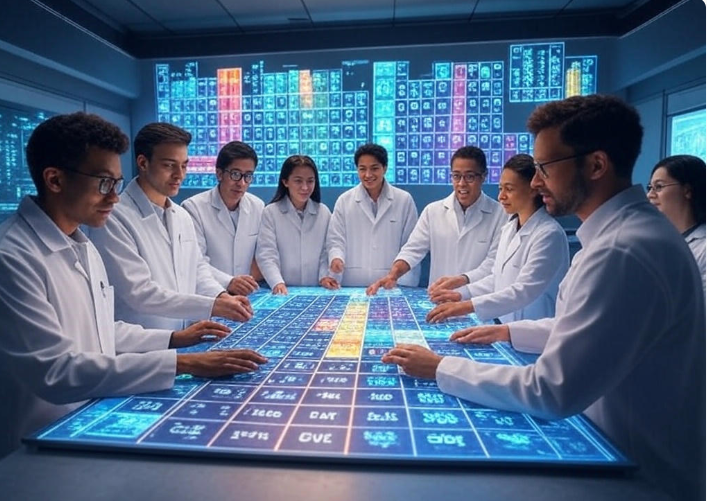In an era where artificial intelligence (AI) is reshaping industries, its voracious appetite for energy is becoming a critical challenge. Data centers, the backbone of AI computation, are grappling with unprecedented power demands, particularly during training phases where GPU usage creates dramatic energy spikes. These surges, akin to the UK’s famous “tea kettle surge” during soccer match halftimes, strain power grids and threaten the stability of renewable energy systems. Enter supercapacitors—a technology poised to revolutionize energy management in AI data centers by smoothing out these spikes and paving the way for a sustainable future.
The AI Energy Challenge
AI workloads, especially during training, are notoriously power-hungry. Unlike traditional computing tasks, AI processes involve rapid, intense bursts of activity as GPUs crunch massive datasets. This results in a wildly oscillating power demand, with peaks that can overwhelm local grids. For instance, a single AI training session can cause power fluctuations on the order of seconds, far faster than most conventional energy storage systems can handle. These spikes not only stress infrastructure but also complicate the integration of renewable energy sources like solar and wind, which are inherently variable.
Historically, data centers have relied on backup power supplies, such as lithium-ion batteries, to manage these fluctuations. However, batteries face significant limitations. Frequent charging and discharging at high rates degrade lithium-ion batteries quickly, reducing their lifespan and efficiency. An alternative approach, known as “dummy calculations,” involves running unnecessary computations to maintain a consistent load on the grid. While this smooths demand, it wastes energy—a costly and unsustainable solution in an era of rising energy prices and climate concerns.
Why Supercapacitors?
Supercapacitors, also known as ultracapacitors, offer a compelling alternative. Unlike batteries, which store energy through chemical reactions, supercapacitors store energy electrostatically on two conductive plates separated by an electrolyte. This design allows them to charge and discharge rapidly—on the order of milliseconds—making them ideal for handling the short-term power bursts typical of AI workloads. Additionally, supercapacitors boast a cycle life exceeding 100,000 cycles, far outlasting lithium-ion batteries, which degrade after a few hundred to a thousand cycles.
The energy density of supercapacitors, while historically lower than batteries (around 8–130 Wh/kg compared to 200 Wh/kg for lithium-ion), is less critical for data center applications where space is not a primary constraint. Instead, their high power density—up to 10–100 kW/kg—enables them to deliver or absorb energy almost instantly, smoothing out AI’s erratic demand curve. This creates a more predictable load on the grid, reducing strain and enhancing compatibility with renewable energy sources.
Industry Leaders Step Up
Companies like Delta, Eaton, and Siemens are at the forefront of deploying supercapacitor solutions for data centers. Siemens Energy, for example, has developed systems where banks of supercapacitors store energy during low-demand periods and release it during AI-driven spikes, creating a smoother power profile. These systems are already being integrated into data centers, with promising results. By mitigating peak loads, supercapacitors not only stabilize the grid but also reduce the need for costly infrastructure upgrades.
Beyond AI, supercapacitors are finding applications in other high-demand sectors. For instance, the Southeastern Pennsylvania Transit Authority (SEPTA) uses supercapacitors in its subway system to capture energy from regenerative braking, reducing energy waste and even selling excess power back to the grid. Such examples highlight the versatility of supercapacitors in managing rapid energy fluctuations, a capability directly applicable to AI data centers.
The Role of Advanced Materials
The performance of supercapacitors has been supercharged by advancements in materials, particularly graphene. Graphene’s high conductivity and massive theoretical surface area (up to 2630 m²/g) make it an ideal electrode material, though practical applications often achieve closer to 1520 m²/g due to stacking limitations. Researchers have made significant strides in overcoming these challenges. For instance, a 2015 study at the Gwangju Institute of Science and Technology achieved an energy density of 131 Wh/kg using a low-temperature graphene production process, nearly four times the previous record for graphene-based supercapacitors.
Other innovations include “holey graphene” frameworks and 3D-printed graphene aerogels, which enhance ion accessibility and boost capacitance. A 2018 study from the University of California, Santa Cruz, demonstrated a 3D-printed graphene electrode with a high mass loading of 180 mg/cm², achieving unprecedented areal capacitance without sacrificing performance. These advancements are closing the gap between supercapacitors and batteries, making them increasingly viable for demanding applications like AI.
Environmental and Economic Benefits
Supercapacitors also align with the push for greener technologies. Unlike lithium-ion batteries, which rely on resource-intensive mining and pose recycling challenges, supercapacitors can be made with more sustainable materials, such as carbon-based electrodes. A 2023 MIT study explored cement-based supercapacitors, combining carbon black with concrete to create scalable, environmentally friendly energy storage. While still in early stages, such innovations could reduce the carbon footprint of data centers and other infrastructure.
Economically, supercapacitors offer long-term savings. Their durability reduces replacement costs, and their ability to smooth power demand can lower electricity bills by avoiding peak pricing. For data centers, where energy costs are a significant operational expense, these savings are substantial. Moreover, as mass production scales—driven by companies like Nanotech Energy and Zap&Go—unit costs are expected to plummet, making supercapacitors even more competitive.
Challenges and Future Directions
Despite their promise, supercapacitors are not a panacea. Their lower energy density means they are best suited for short-term, high-power applications rather than long-term energy storage, where batteries still dominate. Researchers like Lee from IEEE Spectrum note that supercapacitors occupy a niche, excelling in scenarios like AI power bursts but not replacing batteries outright. Scaling supercapacitor systems to meet the needs of hyperscale data centers also requires significant investment in infrastructure and manufacturing.
Future research is focused on improving energy density and integrating supercapacitors with other technologies. Hybrid systems, combining supercapacitors with batteries, could leverage the strengths of both: supercapacitors for rapid power delivery and batteries for sustained energy storage. Additionally, advancements in 2D materials like MXene, which offer up to 10 times the storage capacity of traditional supercapacitors, could further enhance performance.
A Sustainable Future for AI
As AI continues to drive innovation, its energy demands will only grow. Supercapacitors offer a practical, sustainable solution to manage the power spikes that threaten grid stability and renewable energy adoption. By smoothing demand, reducing waste, and leveraging cutting-edge materials, they are poised to play a pivotal role in the data centers of tomorrow. With industry leaders and researchers pushing the boundaries, supercapacitors are not just saving the grid—they’re powering the future of AI.



